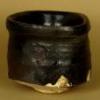The blade has a typical, service polish one would expect on a WWII sword meant for military use.
Properly done, a good cleaning may be all the blade needs.
To have this blade repolished correctly would indeed cost more than it is worth, at least at the present time, still, it would be a crime to let an amateur repolish it, i.e. anyone in the US other than Hayashi or Benson.
It doesn't look to be in that bad of shape. I would give it a good cleaning and let it be.....



